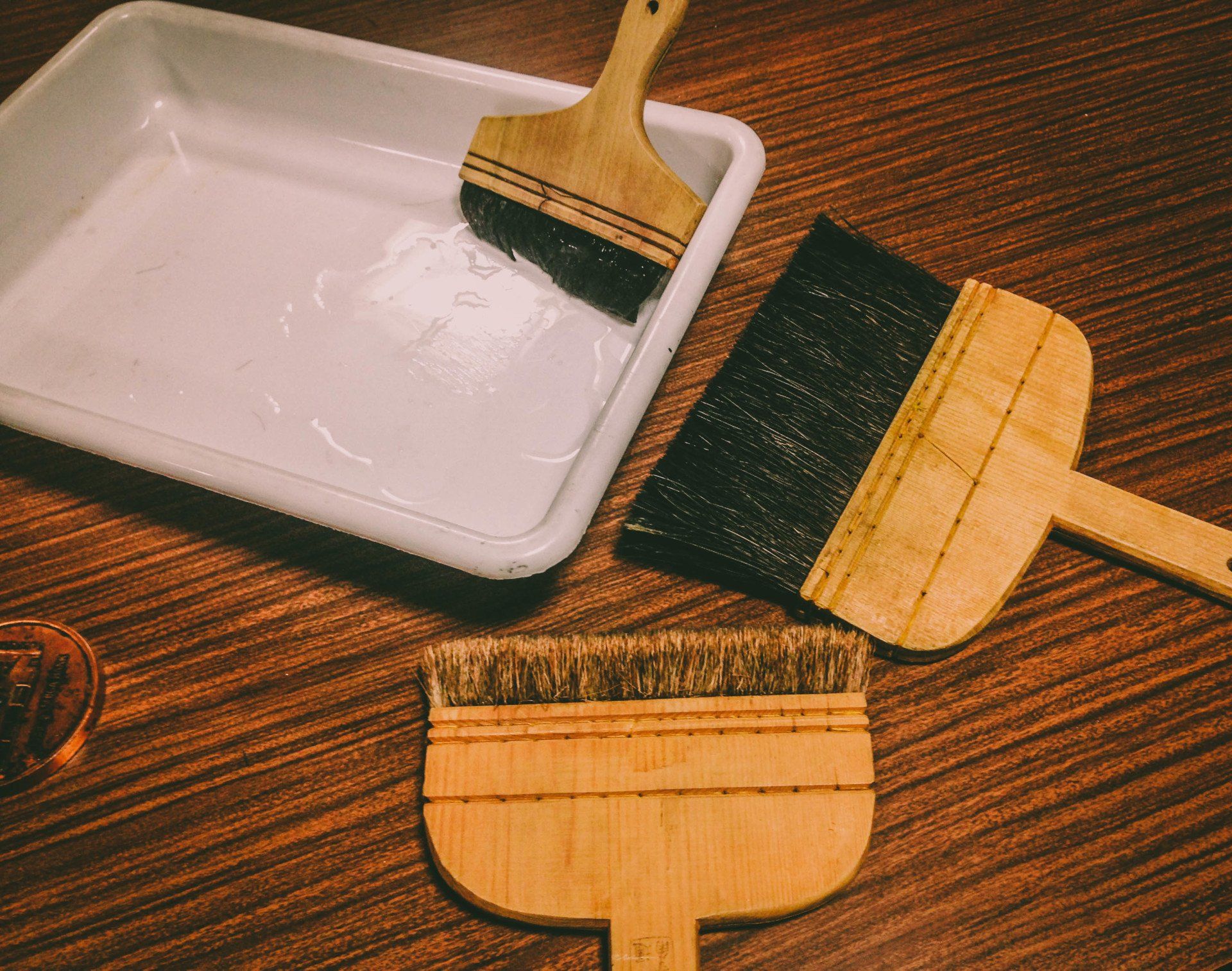On the last day we began the practice by resuming the work from the previous day, but after a short time of practicing, the master saw it necessary to show how to give the paste treatment to the pieces, called urauchi 裏打ち.
This technique consists of preparing a light paste of rice and water in specific doses and, once spread with great care on a paper thicker than the piece to be framed, previously moistened and stretched with very little vaporized water aided by several brushes (noribake) of different bristles, would achieve after gluing both papers and after a day of drying on a piece of wood, that the work would lose all wrinkles caused naturally by the trace of ink on the fine paper of vegetable fibers, and that, in addition, would give it consistency and durability. And to complete this valuable learning, they also told us about another technique to carry out the same purpose, but which in this case uses an alternative treatment, faster and in accordance with contemporary demands. This other type of urauchi is made with a type of paper provided on one of its sides with a substance that reacts to high temperatures. With just the heat of a clothes iron, and making sure that the gestures are always from the inside to the outside of the paper, you can obtain a similar result with fewer steps.
Thanks to the fact that we were able to take recordings of the entire process, we will be able to give it the final finish that we so needed and that we were eager to launch.
The best was yet to come. Nakamura-san was busy preparing some long, large papers on the carpeted floor, while Akiko was translating what the master was telling us. He insisted that we not forget that his main occupation was not teaching, but being a calligrapher, and so he wanted to honor us with a live demonstration of a transcription of an ancient Chinese poem calligraphed by him, something that brought more than one tear of emotion. I must say that it was such a crucial moment for me, that just seeing him and feeling his breathing to the sound of his expressive brushstrokes, made me truly understand why I wanted to dedicate myself body and soul to the practice, and that it had to be with him. For this moment alone I will be eternally grateful.
I must emphasize that the knowledge acquired during this unforgettable week was much more than all that is described here; it was not only a technical learning, but it transcended to the depths of our hearts, something that I would dare to say was experienced by all and that, in my opinion, is true learning. At least that is how I felt and still feel, because I know that involvement with this practice, carried out with dedication, respect and humility, can transform your soul, and even more so if it is by the hand of a great teacher, as Hikita Sensei undoubtedly is.



























